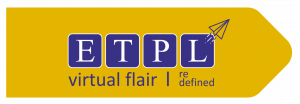Students who seldom enter the library often don’t feel the thrill of finding new books. However, modern Library Management Software is bucking into that trend, making reading more accessible, interactive, and personalized. As digital tools increasingly become part of school life, such technology presents opportunities for those students who otherwise avoid visits to libraries.
Why Some Students Struggle to Connect with Reading and How Library Management Software Helps
Many students either do not visit the libraries because they have limited time, are not interested, or simply do not know what to read. This brings about a gap that usually results in lost reading habits, affecting vocabulary, creativity, and academic performance. Library Management Software bridges this gap by offering a digital-first approach that simplifies book discovery, increases accessibility, and provides personalized recommendations.
1. Personalized Book Discovery Through Smart Recommendations
One of the strongest features of Digital Library Management Software is intelligent book suggestions. Analyzing borrowings, reading patterns, and popularity, the system will then present the student with books they are likely to enjoy. This personalized approach gently nudges even the most reluctant readers to explore stories, subjects, or genres they never considered before.
With tailored recommendations, the libraries are less intimidating and more relevant, hence giving students reasons to read by choice, not compulsion.
2. Easy Access Through Digital Catalogs and Mobile Platforms
Another reason students do not go to the libraries is convenience. The sight of traditional shelves may be overwhelming, and manual searching through books might take a lot of time. On the other hand, with instant digital catalogs, students can view thousands of titles at any time.
Further, mobile access allows students to browse books, check availability, reserve titles, and even read e-books without necessarily having to physically enter the library. Such increased access naturally leads to increased frequency of reading.
3. Gamification Encourages Consistent Reading Habits
Most modern systems make a reading journey exciting through gamification. Many of them entail badge earning, the unlocking of levels, or even reading challenges, all made possible through automated tracking.
The interactive features in the games allow students to want to read more and not treat it like a chore. Sometimes, kids that never participate in academic lessons will end up being really active with game-like rewards.
4. eBooks and Audiobooks Are Suited for Different Learning Styles
Reluctant readers are not always uninterested; they simply often prefer different formats. Some of them may like to listen instead of reading, whereas others may prefer digital texts to physical books.
With the availability of eBooks and audiobooks, Digital Library Management Software provides options to students that best fit their comfort zone, with reading feeling effortless and pleasurable.
5. Notifications and Alerts Keep Reading Top-of-Mind
Students easily forget the due dates or lose track of pending books. Automated reminders gently encourage them to stay engaged with the reading cycle, be it returning a book, exploring new arrivals, or taking part in school reading programs. Consistent nudges help students stay connected with the library’s ecosystem even from within their classrooms or homes.
Learn more: How a Library Management System Improves Student Productivity
How Does Library Management Software Play a Vital Role in Reviving Student Reading Habits?
Library management software acts as a dynamic catalyst, encouraging reading in students who hardly visit the libraries. By providing personalization, convenience, digital access, and engaging features, it transforms how students engage with books and knowledge.
Further, this is not merely about the organization of resources but about creating meaningful reading pathways through smart recommendations, immersive digital libraries, and real-time availability updates. Students can browse, reserve, and read from anywhere, with no hesitation or effort over visiting the libraries.
FAQs
1. What is Library Management Software?
It is a digital system that manages, tracks, and organizes all libraries operation, including book issuing, cataloging, reservations, eBooks, and student reading activities.
2. How does it help students who don’t read often?
By providing smart recommendations, easy access to digital books, gamified experiences, and personalized reading suggestions that make reading more appealing.
3. Can students use it without visiting the libraries physically?
Yes. Many systems offer mobile and web access, allowing students to browse catalogs, reserve books, and read eBooks remotely.
4. Does it support eBooks and audiobooks?
Most modern systems include both, making reading accessible to different learning styles.
5. Is Library Management Software useful for teachers?
Absolutely. It helps teachers track reading progress, suggest books to students, and manage classroom library activities efficiently.
Transform your school library into a digital learning hub Explore eGenius.in now














